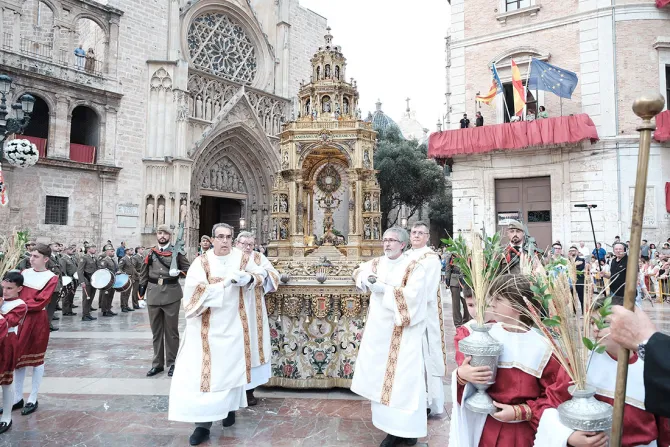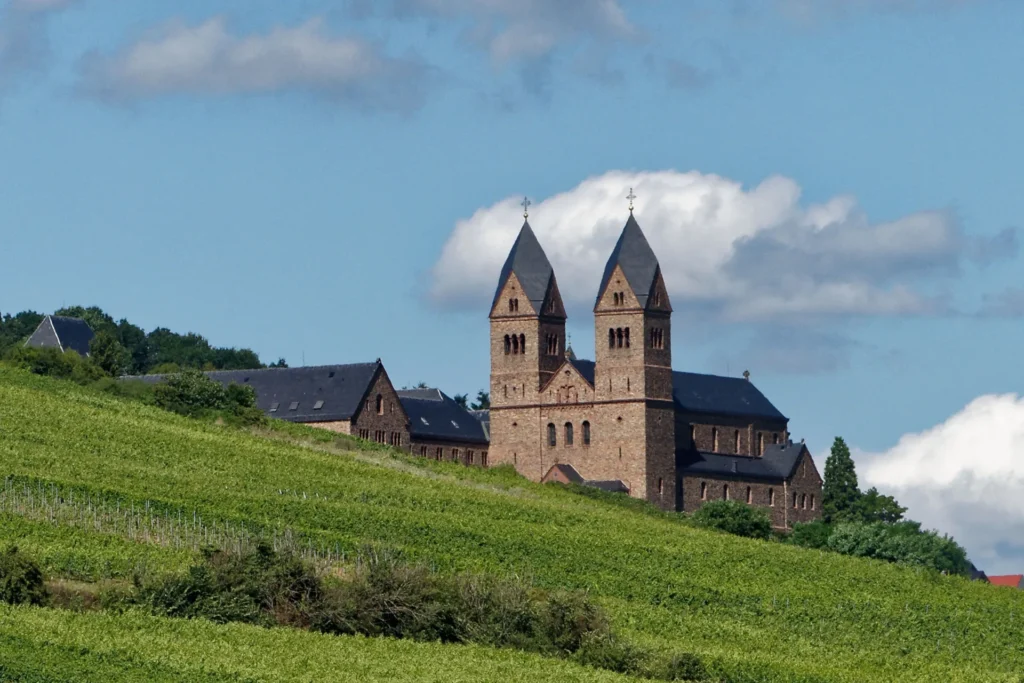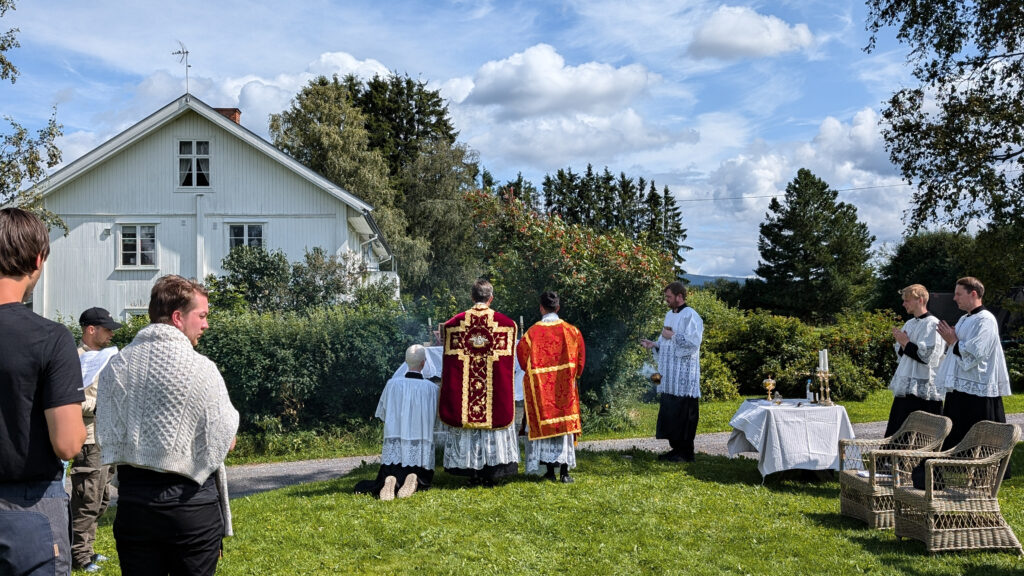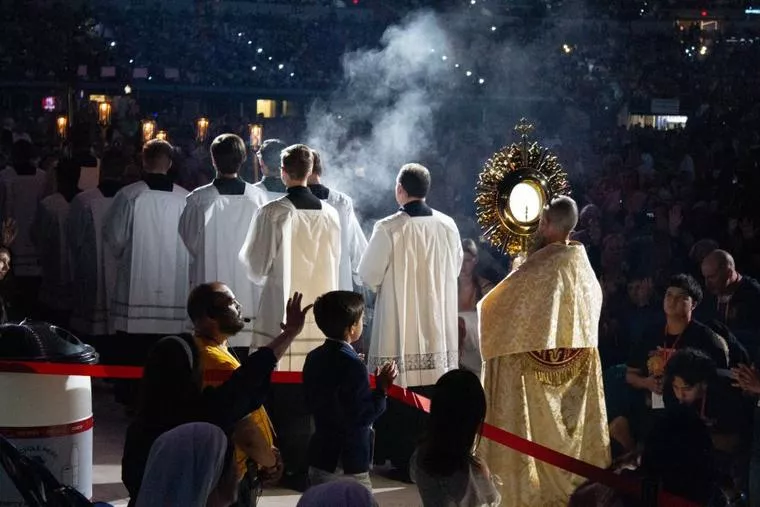By Rachel Thomas
During the annual Corpus Christi procession in Valencia, Spain, the traditional practice of making reparation takes on a deeply symbolic role. The monstrance used in the procession — created as an act of reparation for the atrocities of the Spanish Civil War — is the largest processional monstrance in the world.
The Spanish Civil War raged from 1936 to 1939 and brought about the violent deaths of thousands of priests, nuns, and laypeople. Eleven have already been canonized, and well over 2,000 have been beatified. The cause is underway for another 2,000-plus. In April, the pope recognized the martyrdom of two more: one a priest, the other a father of 11. Victims of the brutality will likely continue to be recognized, bit by bit, for centuries to come.
In addition to the many barbaric martyrdoms, the war also resulted in the loss of great religious and artistic treasures across the country. The monstrance used in Valencia’s Corpus Christi procession was among them.
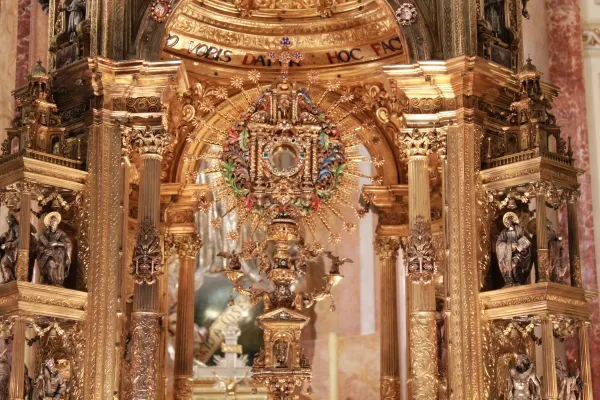
A new monstrance for an ancient procession
Valencia’s procession is ancient. It was first celebrated in 1355, and by 1372, it was an annual event: the city’s “festa grossa” (“great feast” in the Valencian language). It was only in 1264 that Pope Urban IV had made the feast universal for the whole Church.
When the former monstrance was destroyed in the civil war, the city felt its loss at each Corpus Christi procession. But the postwar years were tumultuous times marked by economic struggles.
Nevertheless, a Jesuit priest of the city, Father Antonio de León, proposed to Archbishop Prudencio Melo (archbishop from 1922–1945) the project of constructing a new one. While the archbishop agreed, the priest wasn’t sure how it could happen, given the economic situation. But then he received what he took as a sign, something of a “widow’s mite” in the form of five silver coins donated by a laborer of the city.
León put the project in motion and the citizens of Valencia responded with enthusiasm: Both the poor of the city and the well off donated what they could.
When the monstrance was completed, it was an imposing, beautiful structure, more than 13 feet tall and some 7 feet wide, formed by more than 1,300 pounds of silver and another almost-18 pounds of gold, adorned by hundreds of precious stones and pearls.
https://0717311d843bc0786b8fde27a46e0761.safeframe.googlesyndication.com/safeframe/1-0-40/html/container.html Despite its opulence, Melo “baptized” it as the “Monstrance of the Poor” since it had been constructed thanks to the gifts of ordinary people given from their own livelihood.
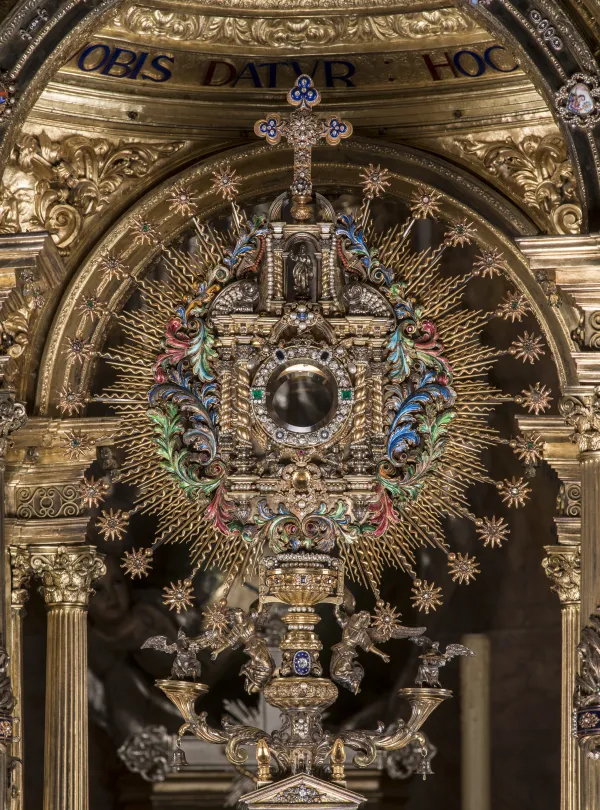
The last touches were finished in 1954 and León called it a “poem written in silver” made for the “glorification of Jesus in the host.” There are 159 sculptures adorning the monstrance, including biblical scenes from the Old Testament up to the Good Shepherd and the risen Christ. The apostles and doctors of the Church adorn the host. Eucharistic miracles are depicted. Saints particularly devoted to the Eucharist are part of the multitude of adorers, as is Pope Pius X, known as the pope of the Eucharist since he encouraged frequent reception of the sacrament and lowered the age for first Communion.
The much beloved Virgin of the Forsaken, the city’s patroness, presides over the whole structure. In restoration works just a few years ago, it was discovered that the original silver coins donated by the poor worker are embedded in the monstrance.
This momentous treasure normally greets visitors who come to the cathedral’s museum, but it is most seen when it makes its way through the streets of the city on Corpus Christi, bringing Christ to the people.
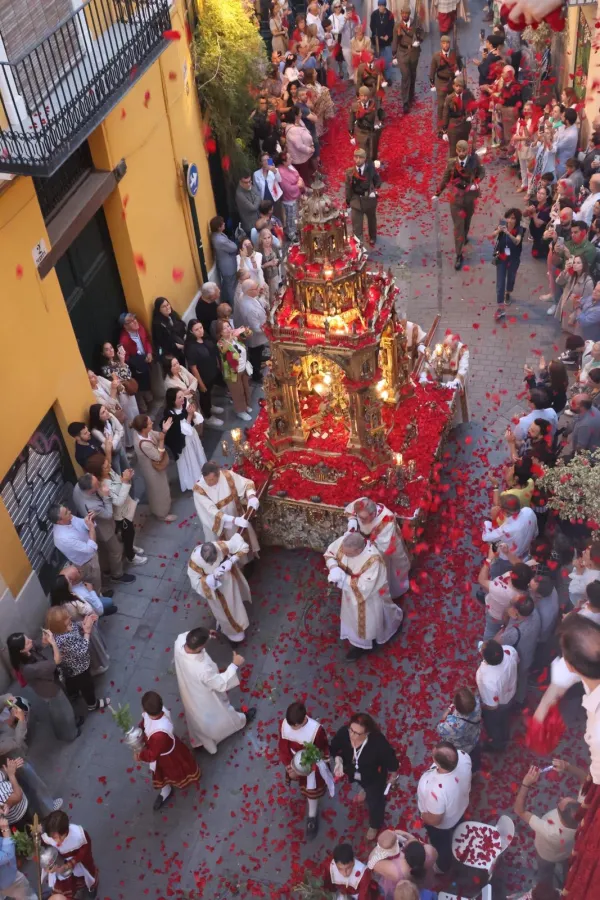
As Jesus passed by this year, one member of the faithful, Carlos Sancho, who was only a youth in the years the monstrance was first used, remembered the symbolic coins donated by that laborer to León. Embedded now in the monstrance, he recalled, “they mean that the monstrance could never be sold, because the money would have to be returned to all the families that donated.”
A mini-catechesis
The procession itself is a mini-catechesis: Among those leading the miles-long group is the “Moma,” dressed all in white and crowned with white flowers but surrounded by the dancing, black-veiled images of the seven deadly sins. The Moma, representing virtue, has to vanquish the tempting evils.
Then come the stories of Scripture: the archangel Michael, Noah with his dove, David with his harp, the minor and major prophets, Jonah carrying a large fish, Judith with Holofernes’ severed head, and Zechariah and Elizabeth begin the New Testament, followed by their son John the Baptist. The four evangelists carry their respective symbols. Saints of the Eucharist and saints particularly linked to Valencia take part. A program distributed for free helps the faithful and spectators to follow the stories.
The elders who stand before the throne of God in the Book of Revelation are a particularly notable group, as they carry 35-pound candles that stand about 6 feet tall. These bearded, white-clad men are among the last figures of the procession, indicating that Jesus is about to arrive.
A large group of vested priests come first, and then a group of sacristans creating a cloud of incense. Finally, Jesus arrives as flower petals rain down on the monstrance, thrown by the faithful gathered on their balconies and those lining the streets.
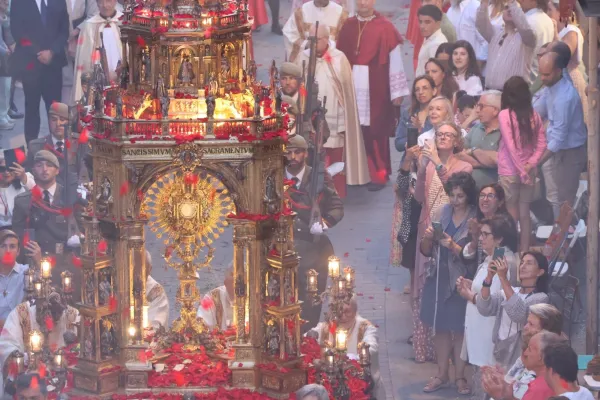
Last month, Pope Francis noted the 350th anniversary of the apparitions of Jesus to St. Margaret Mary Alacoque, recalling how Christ asked the French nun for “acts of reparation.” The pope called making reparation a “beautiful practice,” even if “today [it] may be somewhat forgotten or wrongly judged obsolete.”
Reparation comes from the Latin “reparare,” meaning “to make ready again.” In spiritual terms, it means acting as members of the body of Christ to fulfill what the Catechism of the Catholic Church calls the “duty of reparation,” offering something of our own (which could be our suffering, material goods, prayer, or other things) to make up for an offense.
“Jesus asked St. Margaret Mary acts of reparation for the offenses caused by the sins of humanity. If these acts consoled his heart, this means that reparation can also console the heart of every wounded person,” the pope reflected in his recent address.
While Spain suffered the unspeakable during its civil war, the Monstrance of the Poor is both a reparation to the heart of Christ and a consolation for those few who can remember how it came about and can still take their place to adore Jesus as he passes by each year in Valencia.

